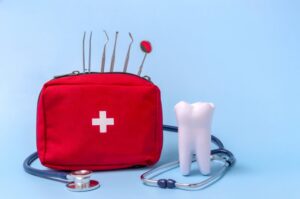
Dental emergencies can happen when you least expect them — a sudden toothache, a knocked-out tooth, or a broken filling can disrupt your day and cause serious discomfort. In those moments, it’s easy to feel anxious about what will happen once you arrive at the dental office. Knowing what to expect during a dental emergency visit can help you stay calm and confident while getting the care you need.
A Quick Assessment and Immediate Relief
When you arrive for a dental emergency, the first priority is to relieve your pain and assess the severity of your condition. The dental team will ask questions about your symptoms — when they started, how severe the pain is, and whether you’ve had any recent injuries or infections.
Depending on the situation, you may receive pain relief right away. This could include a local anesthetic, a temporary medication, or treatment to reduce pressure or swelling. The goal is to make you comfortable as quickly as possible before moving forward with diagnosis and treatment.
Diagnostic Examination and X-rays
Once your pain is under control, your dentist will perform a thorough examination. They’ll look closely at your teeth, gums, and surrounding tissues to identify the source of the problem. X-rays may be taken to detect issues not visible to the naked eye, such as deep decay, abscesses, fractures, or bone loss.
This step is crucial for determining the best course of action. For example, a severe toothache could stem from anything from a cavity to an infected root canal — and each requires a different approach.
Treatment Options and Temporary Solutions
After identifying the cause, your dentist will explain your treatment options. In many cases, they’ll perform the necessary procedure right away, especially if it’s urgent. Common same-day treatments include:
- Filling or bonding for chipped or broken teeth.
- Reinserting a knocked-out tooth, if treated quickly.
- Draining an abscess to reduce infection and swelling.
- Placing a temporary crown or filling if a restoration has come loose.
If the situation requires more complex care — such as a root canal or oral surgery — your dentist may provide temporary treatment to protect the tooth and relieve pain until a follow-up appointment can be scheduled.
Guidance for Recovery and Follow-Up Care
Before you leave, your dentist will give you instructions for caring for your mouth at home. This may include how to manage pain, prevent infection, and avoid further injury. They may prescribe antibiotics or pain relievers if needed. You’ll also schedule a follow-up visit to complete or continue treatment once your condition has stabilized.
Peace of Mind and Prevention Tips
Perhaps the most valuable part of an emergency dental visit is the peace of mind that comes with knowing your problem is under control. Your dentist can also offer advice on how to prevent future emergencies, such as wearing a mouthguard during sports, avoiding hard foods, and keeping up with regular checkups.
A dental emergency can be stressful, but your dental team is trained to handle urgent situations with care and efficiency. During your visit, you can expect quick pain relief, a clear diagnosis, and a plan to restore your oral health. Acting fast — and knowing what to expect — ensures the best outcome for your smile.
About the Author
Dr. Caroline Irons is a graduate of the University of Mississippi Medical Center. Since graduating, she has been active in Spear and TeamACT Education Study Clubs. She is also certified to provide Invisalign through the Invisalign Training Institute and proud to be a member of Women in Dentistry. If you’re experiencing a dental emergency, don’t hesitate – schedule an appointment online or call (208) 322-5655.
